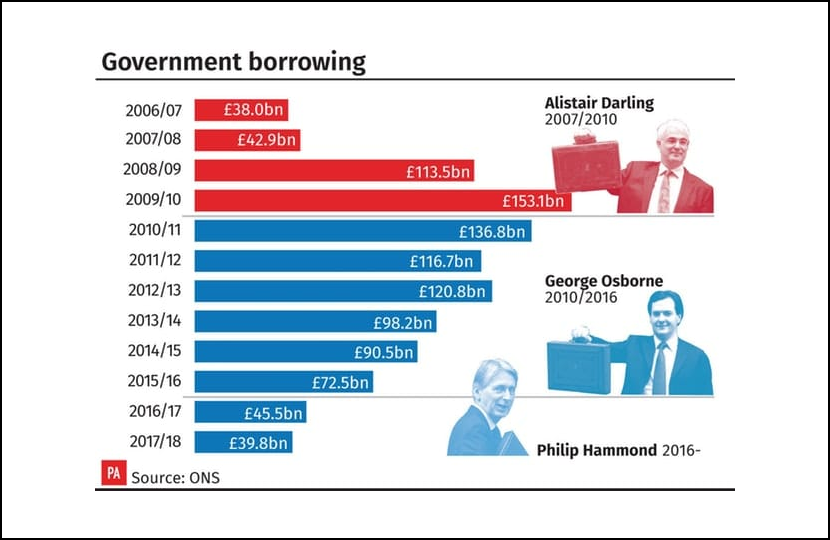From the Office for Budget Responsibility's Overview of the October 2018 Economic and fiscal outlook*
At first glance the outlook for the public finances in the medium term looks much the same as it did in March 2018.
But this masks a significant improvement in the underlying pace of deficit reduction, that on its own would have put the government on course to achieve its objective of a balanced budget for the first time.
As it happens, this underlying improvement had already been swallowed up by the Prime Minister’s promise of higher spending on the NHS made in June. The remaining Budget policy measures are a further near-term giveaway that gradually diminishes over the forecast, leaving the deficit in 2022-23 little changed overall.
The public finances have performed better so far this year than we and outside forecasters expected back in March, even though the economy has grown less quickly.
Once again, the Office for National Statistics (ONS) has revised last year’s budget deficit lower, relative both to its initial estimate in April and to our forecast from March.
Borrowing has also fallen more sharply in the first half of 2018-19 than anticipated, relative to the same period last year. As a result – and before the impact of any policy decisions – we have revised borrowing £11.9 billion lower for the full year (like for like), creating a more favourable starting point for the forecast.
This reflects stronger tax revenues and lower spending on welfare and debt interest than expected.
* Published 29th October 2018 – click here for the article.
- Budget 2018: 24 things you need to know – summary of the 2018 Budget.



